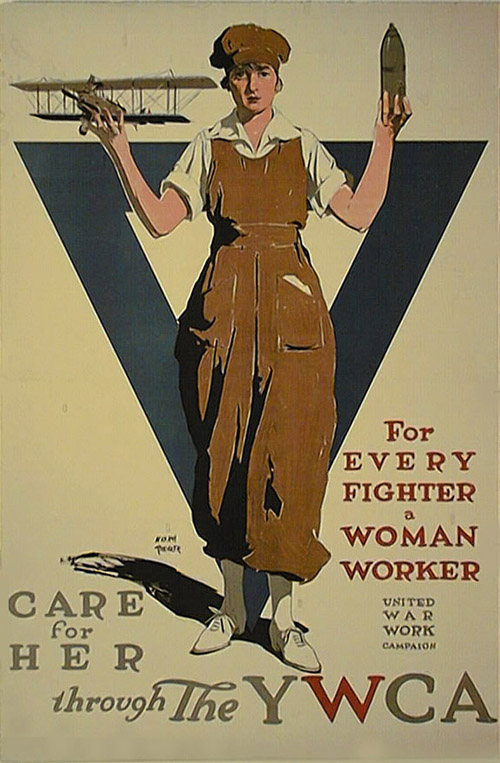
|
|
| This poster presents a symbolic representation of the period and the
roles expected of American males and females during the war. The
poster seeks to create a sense of the unity felt throughout the country,
with the example of women taking over the factory jobs and supporting the
men who are overseas fighting for their country. The poster is further
representative of this period when women began moving into jobs that had
previously been held by men. Also, the fact that she is holding the
bomb and the plane in her hands shows the importance of her role to the
war and that without the labor of women there would not be enough materials
to fight with.
The woman's outfit is a representation of her masculinity for the types of work she is now expected to perform, yet at the same time the outfit includes the idea of femininity with its high waist and shoes which are more "feminine" than a pair of men's working boots. While focusing on the female audience to get women to join the factories, it is also focusing on the male audience which has not yet left for war, comparing these men to women if they are still working in the warehouses. This poster is designed to target the lower-middle class and lower class white people. Another important message in this poster is the idea of the weakness
of the woman, with the text stating how she needs to be taken care of.
At the same time, this message contradicts the image which depicts her
as a powerful person rather than a shy and timid young girl. Not
only does the poster suggest that women need to be taken care of, but also
it also states that women are needed for working and the statement "for
every fighter" is automatically understood to mean a male fighter.
On the whole, this is an accurate representation of the ways in which people
would see the differences in gender at this point in time during the war.
It is also a strong representation of the ways in which people were supposed
to all agree on the war and unite together in support of the country.
|